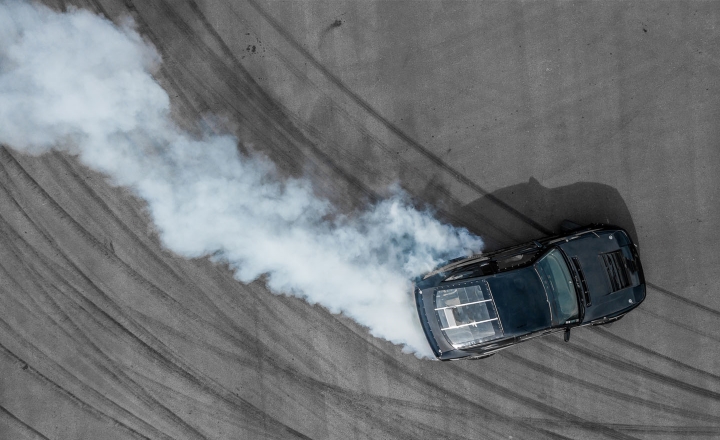This article titled “How to Drift a Car?” will provide detailed instructions on drifting your car like a professional racer. Drifting a car is an exhilarating experience for any vehicle enthusiast. For those unfamiliar with drifting, it is the art of oversteering to navigate around a corner with maximum speed and efficiency.
How to Drift a Car?
Drifting allows you to slide around corners, spin the wheels, and push your car to its limits. It’s become increasingly popular motorsport in recent years, with competitions being held worldwide. If you’re eager to learn how to drift a car? There are a few things you’ll need to know.
It’s important to understand that drifting requires skill and practice. You can’t just jump in your car and start sliding around corners like a professional racer – it takes time and effort. To begin with, you’ll need a rear-wheel-drive vehicle as this will allow you better control over the car when drifting. Ensure your tires have enough grip, so they don’t spin out of control during the drift.
Turning in
Turning in a car is an often overlooked technique in drifting. Many drivers may need to know the significance and advantages of turning in. As a result, they may struggle to master the art of drifting and perform at their best when competing on the track.
Turning in is simple: it involves angling your car to move diagonally across your path while driving. This allows for greater control over your speed, allowing you to drift more accurately and easily. When executed correctly, this maneuver can help you maintain momentum while reducing tire wear, giving you an edge during competitive races and long drives.
Inducing the drift
Drifting is an art form that takes skill and patience to master, but with the right technique, you can pull off some amazing stunts. When it comes to drifting, many people think they need a powerful engine and expensive modifications; however, all you need is some practice and the right setup. Here’s how to induce drift in your car:
Start by finding a large, empty parking lot with room for error. Make sure there are no objects around that could damage your vehicle if you make a mistake. When you’re ready, select the appropriate gear for your vehicle, then press on the accelerator until you reach about half throttle and gradually increase as needed.
As you turn into the corner, slowly apply gentle pressure on the brake pedal until the rear wheels break away from the grip and slide sideways – this is when your car will drift!

www.auttomotive.com
Jumping the drift
When it comes to drifting, some people take it one step further by attempting something called “jumping the drift’. This is when a driver attempts to make their car jump while in the middle of a drift, often with spectacular results as they soar through the air.
However, this trick can be incredibly dangerous and should only be attempted by experienced drivers who know exactly what they are doing. Jumping the drift requires perfect timing and precision to ensure your vehicle lands correctly on its wheels after taking off from a ramp or steep incline. It also requires technical modifications to the car, such as increasing its power output to generate enough speed for takeoff.
Controlling and sustaining drift
Mastering controlling and sustaining drift instead of initiating it can take more work. The key to controlling and sustaining drift lies in understanding how weight transfer affects your vehicle’s handling, how to control the steering wheel input and throttle control, and how to use various driving techniques such as handbrake turns or pendulum turns.
Weight transfer is essential for keeping a vehicle under sustained drift. When you turn the wheel into a corner, weight shifts towards the outside of your vehicle, reducing traction on the inside tires and allowing them to break loose. By using precisely calculated braking pressure at specific intervals, you can ensure that weight is transferred appropriately for drifting for you to maintain balance and control over your vehicle.
Ending the drift
Drifting a car is an adrenaline-filled activity, but when it comes to ending the drift, this can be a difficult task. Drifting is all about gliding around corners and curves while maximizing the use of handbrake and throttle, but knowing when to end the drift is key.
When ending any drift, safety should always be your number one priority. The best way to stop drifting is with smooth counter-steering and gradual braking until you can safely come to a complete stop. Knowing how much pressure your brakes can handle to stop without skidding or spinning out of control safely will help you master this technique. You should also ensure that there are no objects on the track before you attempt to end a drift, as these could impede your progress and result in an accident.
Conclusion
Drifting a car is an exciting and fun way to drive. It takes practice, focus, and skill to master the art of drifting, but with the right techniques outlined in this article, you can learn How to drift a car? Practice on a wide empty area until you become comfortable with your abilities. Be sure to follow all safety guidelines when attempting stunt driving. Finally, always wear your seatbelt for extra protection and enjoy the thrill of drifting!
Frequently asked questions
Can you drift in any car?
Absolutely! Drifting is a driving technique that involves intentionally oversteering, causing the rear wheels to break traction and slide sideways. Any car can be used for drifting, although some cars are better suited than others due to their design and power.
Is it hard to learn drifting?
Drifting is relatively easy to learn but requires much practice and dedication. To become proficient at drifting, you must understand the basics of car control and vehicle dynamics and have a good feel for how your car handles on different surfaces.
Does drifting damage your car?
Yes, drifting can damage your car if it is not done properly. Drifting requires great skill, knowledge, and the right kind of car setup and modifications. If any of these elements are missing, the car may be more prone to damage due to excessive wear on certain parts or incorrect angles when turning.
Is drifting well for racing?
Drifting is a form of racing that has become increasingly popular. It involves taking a car and intentionally skidding around corners, often with smoke billowing from the tires. This can be a great way to show off your driving skills and have fun on the track.
Read Also: How Fast Does a Smart Car Go | Learn About the Top Speed Car

